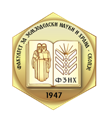PRECISION DAIRY FARMING
Keywords:
Dairy, management, precision, techonology.Abstract
Precision Dairy Farming generally refers to excessive use of technologies on individual animals to measure physiological, behavioral, and production indicators to improve management and farm performance. Many Precision Dairy Farming technologies, including Electronic (radio frequency) identification systems and associated management software Automatic recording devices (rumen temperature, pressure, pH) by electronic rumen bolus, Robotic milking systems daily milk yield recording, Automatic body condition scoring milk component monitoring (e.g. fat, protein, and SCC), pedometers, automatic temperature recording devices, milk conductivity indicators, automatic estrus detection monitors, and daily body weight measurements are already being utilized by dairy producers. This review provides preliminary information on the advances in PDF for dairy management.



